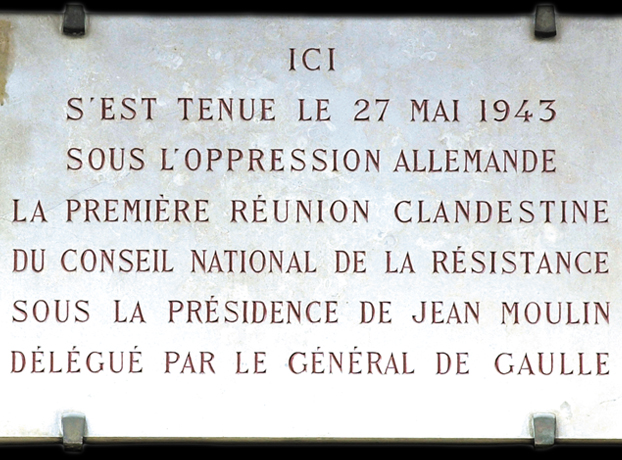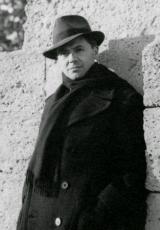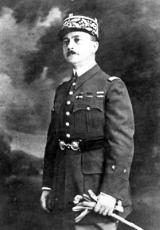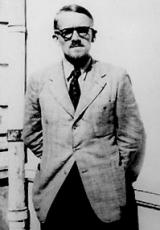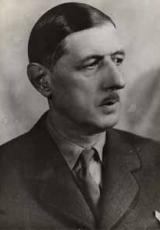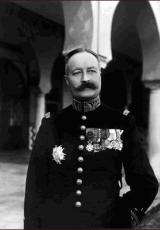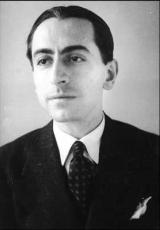The unification of the Resistance

On the 27th January 1943, Henri Frenay, the leader of ”Combat”, Emmanuel d'Astier
de la Vigerie, the leader of ”Libération Sud” and Jean-Pierre Levy, the leader of
”Franc-Tireur”, signed the official document signifying the birth of the ”United
Résistance Movements” (MUR). Then there was the creation of the National
Council for the Résistance (CNR) which met on the 27th May 1943
in rue du Four in Paris.
The Anglo-American landings in Morocco and Algeria on 8 November 1942 accelerated the unification of the Resistance.
Kept out of the Allied operation, General de Gaulle needed the support of the internal Resistance movement.
The US Government was criticised for doing a deal with François Darlan, a notorious collaborator. On 14 December, Jean Moulin, General de Gaulle's representative, asked himself whether the war of liberation ”would not in fact have the effect of consolidating the very regimes against which they were fighting”.
From individual resistance to the birth of the movements
Let us briefly recap here the development of the French Resistance. Born out of a refusal to accept defeat and occupation or a determination to fight Nazism and fascism, in some cases prompted by de Gaulle's call to arms, in the beginning resistance was the preserve of a small number of individuals. It then left the sphere of individual reaction.
Individuals joined forces so that the original small groups became movements whose primary focus was to inform the population, by producing an underground newspaper to counter the propaganda of the Vichy Government and the occupying Germans. In the northern zone, the presence of the occupiers made the activities of the movements which emerged early on even more perilous. Those groups - Organisation Civile et Militaire, Ceux de la Résistance, Ceux de la Libération, Front National pour l'Indépendance de la France, Libération Nord, Défense de la France and La Voix du Nord - had scarcely any links with one another.
Towards a coordinated movement in the south
In the southern zone, the Liberté, Mouvement de Libération Nationale and Libération-Sud movements gave a mandate to Jean Moulin, the former prefect removed from office by Vichy on 2 November 1940 and known for his act of bravery against the occupier on 17 June 1940, to obtain resources from London.
On 25 October 1941, he reported to General de Gaulle in what was a virtual act of union between the two Resistances. Having gone there as a messenger, he returned as de Gaulle's personal representative, to impose his authority on all those involved in the struggle. On 2 January 1942, Jean Moulin, code-named Rex, parachuted in with funds and recording equipment for the movements. His mission was to rally the movements, unite them and form a unified Secret Army, separating the military forces from the political organisations.
Up until then, the internal Resistance and Free France had followed parallel paths, each with its own strategies and political programmes. Yet despite rallying around de Gaulle in the summer of 1942 - a man committed to the principle of restoring the republican ideal - the movements still wanted to maintain their own autonomy of action.
In late 1941, a first fusion took place, with the Mouvement de Libération Nationale absorbing Liberté to form Combat; meanwhile, Franc-Tireur came into being. Jean Moulin set up the Armée Secrète, which General Delestraint agreed to command. Military coordination was difficult: the resistants considered the separation of political and military action to be unrealistic, since both were carried out by the same people. Rex had previously put in place joint services for the various movements, such as the Information and Propaganda Bureau and the National Committee of Experts (future General Committee of Research), responsible for discussing the reforms to be undertaken at Liberation.
The coordination of the movements in the southern zone culminated in the establishment of a committee chaired by Jean Moulin himself, who met on 27 November 1942 with General Delestraint, commander of the Armée Secrète, and the leaders of Combat, Libération-Sud and Franc-Tireur - Frenay, d'Astier de la Vigerie and Levy. That committee transmitted the general instructions from the Comité National Français in London to the movements.
The movements join forces
In early 1943, things started to move more quickly, due to the political situation in North Africa, with General Giraud appointed as Darlan's successor after the latter was killed on 24 December 1942. As difficult talks got under way between generals Giraud and de Gaulle, Moulin regarded it as essential for the Resistance to unite, in order to provide the leader of Free France with decisive support.
On 27 January 1943, Frenay, d'Astier and Levy signed the official agreement establishing the Mouvements Unis de Résistance, under a single leadership. Every level of every movement had to appoint one leader. This was pivotal in the history of the internal French Resistance, because the movements agreed to join forces at a decisive moment in the struggle.
With the occupation of the southern zone by the Germans and Italians on 11 November 1942, and the subsequent creation of the Milice, the resistants were forced to take more precautions. Unity was what the grass-roots members and the leaders of the movements wanted. The MUR's executive committee was chaired by Jean Moulin, with Frenay in charge of ”Military Affairs”, d'Astier de la Vigerie ”Political Affairs” and Levy ”Information and Administration”. The southern zone was divided into six regions run by the representative of the largest group.
The increasing harshness of life underground, due to repression being stepped up, meant that unceasing reorganisation was required. The establishment of the Armée Secrète, which coincided with an influx of men wishing to escape the Compulsory Labour Service, introduced on 16 February 1943, led to discussions about its nature (Frenay wanted a ”revolutionary army”), how it should be used and what resources it should be given, all of which depended on what role the Allied chiefs of staff and the French Committee intended it to play on D-day. Immediate actions - sabotages, punitive operations, etc. - had previously been carried out by armed groups within the movements, known as Groupes Francs. The purpose of Moulin and Delestraint's trip to London was to obtain help with arming and supplying the maquis.
The creation of the National Council of the Resistance
The other issue was the creation of the National Council of the Resistance, a kind of underground parliament, which reintroduced the political parties and unions. The co-founder of Libération-Nord, Christian Pineau, among others, advocated this idea. The leaders of the Resistance agreed to it reluctantly, because the movements founded with the aim of liberating the country had, in a way, taken the place of political parties discredited by the defeat. Frenay called for a ”New France” combining socialism and freedom.
Armed with new instructions from General de Gaulle, it was Rex, as ”commissioner for all of France”, who had the task of setting up the National Council of the Resistance.
The Council was needed to take account of the role played by the communists (FTP-Front National), socialists (Socialist Action Committees) and union activists (the ”Manifesto of the Twelve”, of 15 November 1940) in the Resistance. In the northern zone, Pierre Brossolette, sent by the Central Bureau of Intelligence and Action (BCRA) to carry out there what had been done in the southern zone, was opposed to Jean Moulin's creation of the National Council of the Resistance (CNR). He was assigned the task of setting up a coordination committee concerned with the movements in the northern zone that resisted the introduction of the political parties. His task, accomplished in less than ten weeks, was remarkable because the bodies he set up would prove to be long-lasting. The communist party, better established than in the southern zone, was a major force, making its incorporation difficult. Eight large movements were preserved within Jean Moulin's CNR, the smaller ones being represented within the larger ones.
On 27 May 1943, at 48 rue du Four, in Paris's 6th arrondissement, Jean Moulin chaired a meeting of the 16 formations:
eight Resistance movements (three in the southern zone: Combat, Libération-Sud and Franc-Tireur; five in the northern zone: Organisation Civile et Militaire (OCM), Libération-Nord, Ceux de la Résistance (CDLR), Ceux de la Libération (CDLL) and Front National); six political factions (communists, socialists, radicals, popular democrats, Alliance Démocratique and Fédération Républicaine); and two unions: the CGT and the CFTC.
In this way, all elements of the Resistance were brought together under one umbrella organisation, which gave its support to General de Gaulle to ”prepare, with complete lucidity and complete independence, the rebirth of a destroyed nation whose republican freedoms are in tatters”. General Giraud, who as military commander was de Gaulle's subordinate, realised the importance of the Resistance and, at the end of May, had the leader of Free France come to Algiers. The struggle called for a single, united France.
And that union, which was not self-evident, had been accomplished.
Jean Moulin's arrest in Caluire, on 21 June 1943, did nothing to weaken it.
A combatant France prepared for its final objective: the liberation of the motherland.
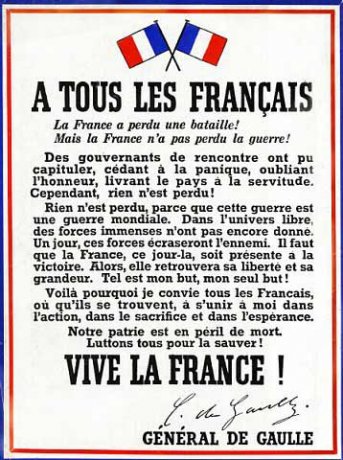
Appel du général de Gaulle du 18 juin 1940.
Photo DMPA
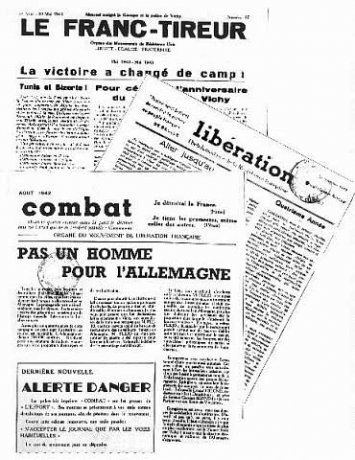
Journaux des trois mouvements de résistance qui s'unirent pour former
le Mouvement Unis de Résistance.
Source : SHD
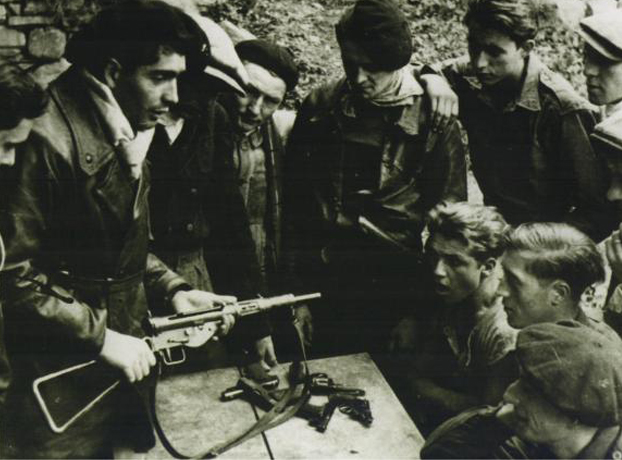
©Musée de la Résistance Nationale
